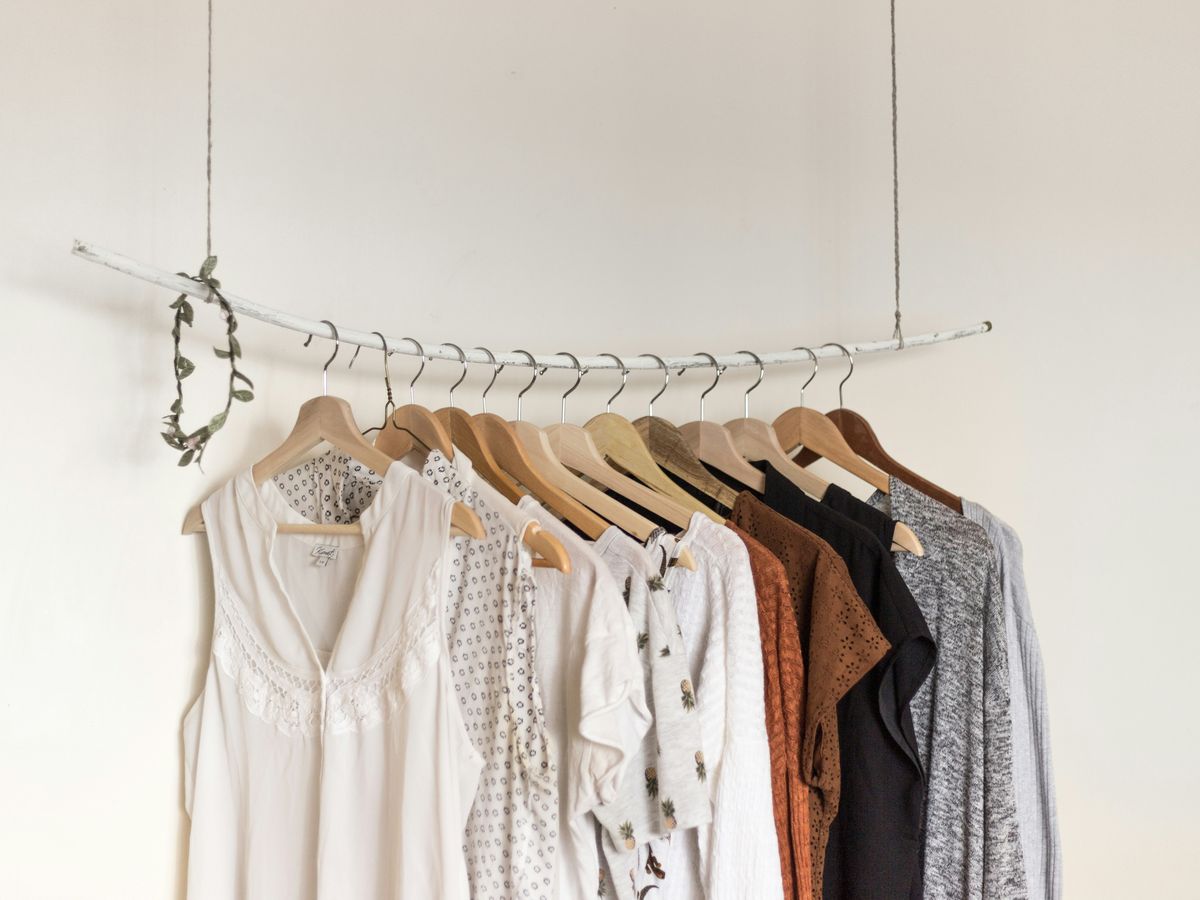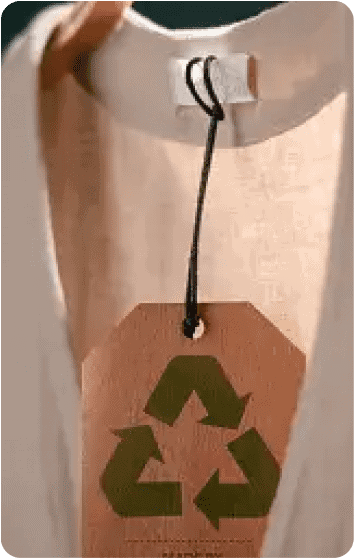Velvet, a luxurious fabric known for its soft, plush texture and rich, jewel-toned hues, has been a staple in fashion and design for centuries. From royal courts to runway shows, this fabric has captivated hearts with its opulence, chic styling, and sophistication.
How can one forget Rihanna’s velvet Schiaparelli gown with dramatic puff sleeves at the 80th Annual Golden Globe Awards or a layered velvet slip dress worn by Kendall Jenner?
However, in recent years, sustainability has become a critical consideration in various industries, including fashion and interior design. Consumers are increasingly aware of the environmental impact of their purchases and are seeking out more sustainable options. That makes one wonder if they can have eco-friendly velvet options.
This article aims to explore the question: Is velvet material sustainable? By examining the production processes, environmental impacts, and available sustainable alternatives, we aim to provide a comprehensive understanding of velvet’s sustainability.
Let’s start from the beginning, i.e. what is velvet?
What is Velvet?

Velvet is a type of woven fabric characterized by its soft, smooth, and dense pile, which gives it a luxurious texture and appearance. It is traditionally made from silk, but modern velvet can also be made from cotton, polyester, nylon, or blends of different fibers.
But does it mean that velvet is eco-friendly or is velvet sustainable? Well, it all depends on the way velvet is produced and manufactured. Do you know that the traditional production process of velvet has raised concerns about its environmental impact? Let’s understand that by learning about the velvet manufacturing process.
How Is Velvet Made?

The manufacturing of velvet typically involves the use of synthetic fibers, such as polyester or nylon, which are derived from non-renewable fossil fuels. These materials can be resource-intensive and contribute to the release of greenhouse gasses during production.
Additionally, the dyeing and finishing processes often rely on harsh chemicals, which can have detrimental effects on the surrounding ecosystems and water sources.
Now, let’s take a closer look at traditional and synthetic velvet production to understand what makes them different.
Traditional Velvet Production Methods
Traditional velvet production involves weaving two layers of fabric simultaneously, which are then cut apart to create the pile effect. This method is labor-intensive and requires significant amounts of water and energy. Historically, silk was the primary fiber used, which, while natural, involved resource-intensive cultivation and production processes.
There are two kinds of velvet produced: Natural and synthetic. Each of them has its own pros and cons. Let’s look at them.
Natural vs. Synthetic Velvet
| Feature | Natural Velvet | Synthetic Velvet |
| Materials | Often made from silk or cotton | Typically made from polyester or nylon |
| Biodegradability | More biodegradable | Not biodegradable |
| Resource Use | Involves considerable resource use | Derived from petroleum-based products |
| Environmental Impact | Lower environmental impact if sourced sustainably | Contributes to microplastic pollution |
| Cost | Generally more expensive | Cheaper and easier to produce |
| Sustainability | Better if organic or sustainably sourced | Less sustainable due to reliance on fossil fuels |
The manufacturing process of velvet has many stages, from sourcing raw materials to power consumption and waste management. Each stage has its own environmental impact. The environmental impacts of velvet that you must know are shared below.
The Environmental Impact of Velvet
The environmental impact of velvet depends largely on the materials and methods used. Key factors include:
- Raw Materials: The sustainability of velvet starts with its raw materials. Synthetic velvets made from polyester or nylon fibers can lead to environmental damage like microplastic pollution.
- Energy Consumption: Velvet production is energy-intensive, particularly when using synthetic fibers.
- Chemical Usage: The dyes and finishing processes often involve harmful chemicals, affecting both the environment and worker health.
- Waste Generation: The production process generates significant waste and also leads to water pollution from dyeing and finishing.
Now, one question that you must be asking is, “How sustainable are velvet fabrics, and is velvet eco-friendly? Let’s answer those.
Is Eco-Friendly Velvet A Possibility?
When it comes to the sustainability of velvet, the answer is not a simple yes or no. The material’s environmental impact largely depends on the production methods and materials used.
Below are a few factors that must be considered while manufacturing sustainable velvet.
How To Make Velvet Sustainable

To determine how sustainable is velvet, several factors must be considered:
- Raw Materials: Sustainable velvet should be made from eco-friendly materials like organic cotton, bamboo, or recycled fibers. These materials reduce the reliance on non-renewable resources and minimize environmental impact.
- Production Practices: Energy-efficient production methods and the use of non-toxic dyes and finishes are crucial. Reducing water usage and implementing waste management practices also enhance sustainability.
- Durability and Lifespan: High-quality velvet that lasts longer reduces the need for frequent replacements, thereby lessening environmental impact over time.
Traditional vs. Sustainable Velvet
- Traditional Velvet: Traditional velvet, made from synthetic fibers, has a higher environmental footprint due to its reliance on non-renewable resources and the use of potentially harmful chemicals. This type of fabric may not be the most eco-friendly velvet choice for those seeking to reduce their carbon footprint.
- Sustainable Velvet: Fortunately, the fashion industry has responded to the growing demand for sustainable textiles, and eco-friendly velvet options are now available. Sustainable velvet utilizes eco-friendly materials and processes, to minimize environmental impact. Innovations in sustainable velvet production include using organic, recycled, or upcycled fibers and implementing energy-efficient and low-impact dyeing processes.
Are you curious to learn more about sustainable velvet alternatives? That’s what Ecowiser is covering next.
Exploring Eco-friendly Velvet Fabrics
When it comes to the sustainability of velvet fabrics, it’s crucial to consider the materials used in their production. There are several eco-friendly alternatives that can be used to create sustainable velvet fabrics. As the demand for sustainable fashion continues to grow, the textile industry has responded with innovative solutions. The following are well-curated eco-friendly velvet options to explore:
Recycled Velvet: Recycled velvet is made from post-consumer plastic bottles or textile waste, diverting these materials from landfills and reducing the need for virgin resources. This process not only reduces waste but also conserves energy and water compared to traditional velvet production.
Organic Velvet: Organic velvet is produced using natural fibers, such as cotton or silk, that are grown without the use of synthetic pesticides or fertilizers. This approach minimizes the environmental impact and supports sustainable agricultural practices.
Upcycled Velvet: Upcycled velvet involves repurposing existing velvet items, such as vintage clothing or home decor, into new products. This process reduces waste and gives new life to materials that would otherwise end up in landfills.
By exploring these sustainable velvet options, consumers can make more informed choices and contribute to a more eco-conscious fashion industry.
While you are exploring sustainable velvet alternatives, here’s a comparison between velvet and other fabrics. This will help you make more environmentally friendly fashion choices while buying or designing clothes.
Certifications and Standards for Eco-friendly Velvet Fabrics
When buying sustainable velvet fabrics, look for certifications to ensure the material meets high environmental and social standards. Here are some important ones:

Organic Certifications
- USDA Organic: Ensures that the raw materials, like cotton or silk, are grown without synthetic pesticides or fertilizers.
- Global Organic Textile Standard (GOTS): A global certification that confirms the organic content and sustainable practices throughout the manufacturing process.
Recycled Content Certifications
- Recycled Claim Standard (RCS): Certifies that the fabric contains recycled content and verifies its chain of custody.
- Global Recycled Standard (GRS): Ensures that products with at least 20% recycled materials meet standards for recycled content, chain of custody, and social and environmental practices.
Chemical Safety Certifications
- OEKO-TEX Standard 100: Ensures that textiles, including velvet, are free from harmful substances and safe for human health.
- STeP by OEKO-TEX: Communicates a company’s efforts to reduce environmental impact, such as lowering carbon footprint and water usage.
Other Relevant Certifications
- Silk Mark: An Indian certification ensuring proper cultural, environmental, and humanitarian standards in silk production.
- B Corp Certification: Indicates that a for-profit company meets high social and environmental performance standards.
- Cradle2Cradle: Evaluates products designed for the circular economy, covering material health, reuse, renewable energy, water stewardship, and social fairness.
Read more about certifications for fabrics.
Now, it’s not necessary that all the velvet items have all of these certifications. But, as the saying goes, the more, the merrier! It’s always good to have as many as you can. So, by looking for these certifications, consumers can make informed choices and ensure that the velvet meets stringent environmental and social criteria.
However, just looking at the certifications isn’t enough. You must also learn about the brands, the quality of material, etc to make more informed decisions. Here’s a small checklist to guide you.
How To Buy Velvet Responsibly
These tips are surely going to help you buy sustainable velvet guilt-free.
- Check the Labels: Look for organic or recycled materials and certifications.
- Research Brands: Support brands committed to sustainable practices and transparency.
- Opt for Quality: Invest in high-quality velvet that will last longer and reduce the need for replacements.
- Consider Second-Hand: Purchasing second-hand velvet items reduces the demand for new production and extends the life of existing products.
“Is velvet a sustainable fabric?” is a question that should be asked by both fashion brands and consumers to promote more eco-friendly practices in the textile industry. There’s a shift in the industry, and here’s everything you need to know about it:
A Shift Towards Selling Eco-friendly Velvet

Brands committed to sustainability are increasingly choosing to sell eco-friendly velvet as part of their product offerings. These brands focus on minimizing environmental impact through the use of sustainable materials, ethical production methods, and eco-conscious business practices.
These brands are part of a growing movement towards sustainable fashion and home decor, and there are top brands selling eco-friendly velvet that are demonstrating that it is possible to combine style, comfort, and environmental responsibility. By choosing eco-friendly velvet and other sustainable materials, these companies are leading the way in creating a more sustainable future for the fashion and furniture industries.
Here’s To Making Wiser Choices With Eco-friendly Velvet
Traditional velvet production poses significant sustainability challenges due to its inhumane production process, reliance on non-renewable resources, high energy demands, and industrial practice However, the emergence of eco-friendly alternatives offers a more sustainable choice for consumers. By opting for sustainable materials like recycled or organic fibers and adopting eco-conscious production methods, individuals can enjoy the luxurious feel of velvet while being in alignment with their environmental values.
As innovations continue, the answer to “Is velvet sustainable?” becomes more promising, with various options supporting a more sustainable lifestyle. By making informed choices and supporting sustainable practices, consumers can enjoy the luxury of velvet while contributing to a healthier planet. Explore our blog for more insights on sustainable living and eco-friendly materials.
Also read about another interesting fabric: Suede Leather
Frequently Asked Questions (FAQs)
Is Velvet Sustainable?
No. Traditional velvet has a detrimental environmental impact due to its production process and sourcing of raw materials. However, innovations in the production and manufacturing process has made sustainable velvet a possibility.
What are a few eco-friendly velvet fabric options?
Sustainable velvet fabric options include those made from organic cotton, recycled fibers, and other eco-friendly materials. Look for certifications like GOTS (Global Organic Textile Standard) to ensure sustainability.
How Sustainable is Velvet?
The sustainability of velvet depends on the materials and production methods used. Natural fibers like organic cotton are more sustainable than synthetic fibers, but the overall impact also includes factors like energy and chemical use.








